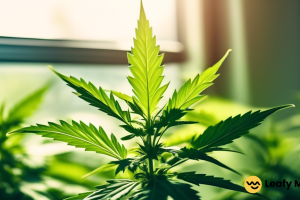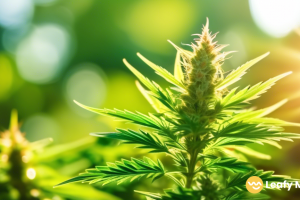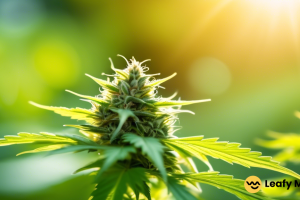Cannabis cooking oil has gained popularity in recent years, as more and more people are interested in exploring the culinary possibilities of this versatile plant. Making your own cannabis cooking oil gives you complete control over the ingredients, potency, and flavor, ensuring a personalized and enjoyable cooking experience.
In this article, we will guide you through making your cannabis cooking oil in just five simple steps.
The first step in making your own cannabis cooking oil is choosing the right cannabis strain. Different strains have varying levels of cannabinoids, such as THC and CBD, which are responsible for the therapeutic and psychoactive effects of cannabis.
Key Takeaways
- Choosing the right cannabis strain is the first step in making cannabis cooking oil.
- Temperature control is vital during the decarboxylation process.
- Infusing cannabis into a high-fat oil allows for the release and dissolution of cannabinoids.
- Proper storage in an airtight glass container in a cool and dark place is necessary to maintain the freshness and potency of cannabis oil.
Choosing the Right Cannabis Strain
When selecting a strain for your cooking oil, you’ll want to understand the different effects of indica and sativa strains. Indica strains are known for their relaxing and calming effects, making them perfect for those who want to unwind and destress. On the other hand, sativa strains are known for their energizing and uplifting effects, making them ideal for those who want to enhance their creativity and focus. Depending on the desired outcome of your cannabis-infused dishes, you can choose a strain that matches the mood and experience you want to create.
Another option to consider is using hybrid cannabis strains for your cooking oil. Hybrid strains are created by crossbreeding indica and sativa strains, combining their unique characteristics. This can offer a more balanced and tailored experience, as you can choose a hybrid strain that leans more towards indica or sativa, depending on your preference.
Hybrid strains can provide various effects, from uplifting and euphoric to relaxing and calming. They can also offer a variety of flavors and aromas, adding depth and complexity to your cannabis-infused dishes. Using a hybrid strain in your cooking oil, you can experiment with different combinations and find the perfect balance of effects and flavors for your culinary creations.
Decarboxylating Your Cannabis
To ensure maximum potency, start by decarboxylating your cannabis. Decarboxylation is a crucial step in making cannabis cooking oil as it activates the cannabinoids present in the plant material. Without this process, the oil won’t have the desired psychoactive effects.
Here are some important points to consider when decarboxylating your cannabis:
- Importance of temperature control during decarboxylation: It’s essential to maintain the right temperature during this process. Too low a temperature won’t activate the cannabinoids, while too high a temperature can lead to the degradation of these compounds. The ideal temperature range for decarboxylation is between 220°F and 240°F (105°C and 115°C).
- Different methods of decarboxylating cannabis: There are various ways to decarboxylate your cannabis, each with its pros and cons. Some common methods include using an oven, a slow cooker, or a sous vide machine. The choice of method depends on factors such as time, convenience, and equipment availability. Whichever method you choose, make sure to monitor the temperature closely to achieve the best results.
- Oven method: This is one of the most popular methods for decarboxylating cannabis. Simply preheat your oven to the desired temperature and spread the cannabis evenly on a baking sheet. Place the sheet in the oven and bake for about 45 minutes, gently stirring the cannabis every 10-15 minutes to ensure even decarboxylation.
- Slow cooker method: This method is convenient for those who want to decarboxylate larger quantities of cannabis. Place the cannabis in a mason jar and seal it tightly. Fill the slow cooker with water and set it to the desired temperature (around 200°F or 93°C). Submerge the mason jar in the water and let it sit for several hours.
- Sous vide method: This method involves using a sous vide machine to control the temperature during decarboxylation precisely. Place the cannabis in a vacuum-sealed bag and set the sous vide machine to the desired temperature (around 220°F or 105°C). Submerge the bag in the water bath and let it sit for several hours.
Infusing the Cannabis into Oil
You can use several tips and techniques to optimize the infusion process and ensure that your oil is as potent as possible. One important tip is to finely grind your decarboxylated cannabis before infusing it into the oil. This will increase the surface area of the cannabis, allowing for better extraction of the cannabinoids.
It’s also recommended to use a high-quality oil with a high fat content, such as coconut oil or olive oil, as these oils are better at absorbing and retaining the cannabinoids.
The science behind cannabis infusion involves understanding the chemical reactions that occur during the process. When cannabis is heated in oil, the cannabinoids, such as THC and CBD, are released from the plant material and dissolve into the oil. This is because cannabinoids are fat-soluble, meaning they bind to the fat molecules in the oil. The heat helps to speed up this process and allows for a more efficient extraction of the cannabinoids.
To ensure that the infusion process is successful, it’s crucial to maintain a consistent temperature throughout. This can be achieved by using a double boiler or a slow cooker, which provide a gentle and even heat. It’s also recommended to infuse the cannabis into the oil for a longer period of time, typically around 3 to 4 hours, to allow for a thorough extraction.
Can I Use the Cannabis Cooking Oil I Made to Infuse Burgers?
Yes, you can definitely use the cannabis cooking oil you made to infuse burgers. When making your cannabisinfused chipotle burgers recipe, simply substitute the regular cooking oil with your cannabis-infused oil for a delicious and elevated experience. Just be mindful of the dosage to avoid overconsumption. Enjoy responsibly!
Straining and Storing Your Cannabis Oil
Proper storage techniques are crucial for maximizing the shelf life of your homemade cannabis cooking oil and ensuring its potency and flavor are preserved.
Here are some helpful steps to follow:
- Choose a suitable container: Store your cannabis oil in an airtight glass container to prevent oxygen exposure, which can degrade the oil over time. Avoid plastic containers, as they can leach chemicals into the oil.
- Keep it cool and dark: Cannabis oil is sensitive to light and heat, so store it in a cool, dark place like a pantry or a refrigerator. This will help slow down the degradation process and maintain the oil’s quality for longer.
- Label and date your oil: It’s essential to label your cannabis oil with the strain used, the date it was made, and the potency. This information will help you keep track of your oil’s freshness and potency over time.
Cooking with Your Homemade Cannabis Oil
When cooking with your homemade cannabis oil, consider the potency and dosage for your desired recipe. The level of THC in your oil will determine how strong the effects will be, so it’s crucial to be mindful of the dosage you use.
Start by calculating the total amount of THC in your oil, which can be done by multiplying the percentage of THC in your cannabis by the total amount of oil you have. This will give you an idea of how much THC is in each recipe serving.
Once you have determined the potency of your oil, you can consider the dosage for your desired recipe. It’s recommended to start with a small amount of oil and gradually increase the dosage if needed. Remember that the effects of ingesting cannabis can take longer to kick in compared to smoking or vaping, so be patient and wait at least 30 minutes to an hour before deciding if you need to consume more.
Now that you have considered the dosage, you can explore the culinary uses of cannabis oil. Cannabis oil can be used in various dishes, from sweet to savory. It can be added to baked goods like cookies, brownies, and cakes to give them a subtle cannabis flavor. You can also use it in salad dressings, marinades, and sauces to infuse your dishes with a hint of cannabis. Some people even drizzle cannabis oil over popcorn or use it as a topping for pizza.
The possibilities are endless, so get creative and experiment with different recipes to find your favorite way to incorporate cannabis oil into your cooking.











Leave a Reply